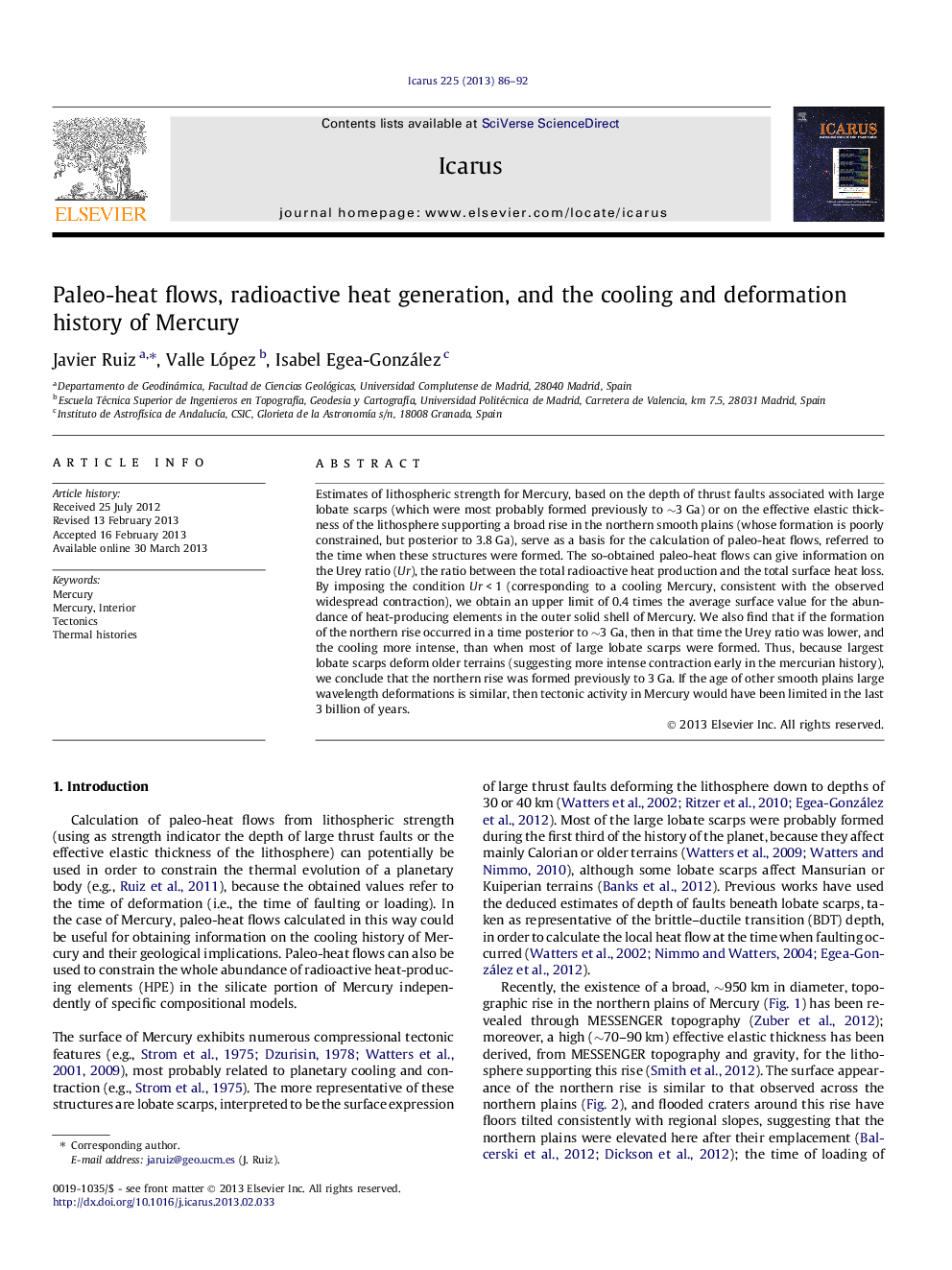| کد مقاله | کد نشریه | سال انتشار | مقاله انگلیسی | نسخه تمام متن |
|---|---|---|---|---|
| 1773189 | 1021122 | 2013 | 7 صفحه PDF | دانلود رایگان |

• Indicators of lithospheric strength for Mercury serve to calculate paleo-heat flows.
• Paleo-heat flows constrain the radioactive heat production in Mercury interior.
• The northern rise of Mercury was most probably formed previously to 3 Ga.
• Tectonic activity in Mercury could have been limited in the last 3 billion of years.
Estimates of lithospheric strength for Mercury, based on the depth of thrust faults associated with large lobate scarps (which were most probably formed previously to ∼3 Ga) or on the effective elastic thickness of the lithosphere supporting a broad rise in the northern smooth plains (whose formation is poorly constrained, but posterior to 3.8 Ga), serve as a basis for the calculation of paleo-heat flows, referred to the time when these structures were formed. The so-obtained paleo-heat flows can give information on the Urey ratio (Ur), the ratio between the total radioactive heat production and the total surface heat loss. By imposing the condition Ur < 1 (corresponding to a cooling Mercury, consistent with the observed widespread contraction), we obtain an upper limit of 0.4 times the average surface value for the abundance of heat-producing elements in the outer solid shell of Mercury. We also find that if the formation of the northern rise occurred in a time posterior to ∼3 Ga, then in that time the Urey ratio was lower, and the cooling more intense, than when most of large lobate scarps were formed. Thus, because largest lobate scarps deform older terrains (suggesting more intense contraction early in the mercurian history), we conclude that the northern rise was formed previously to 3 Ga. If the age of other smooth plains large wavelength deformations is similar, then tectonic activity in Mercury would have been limited in the last 3 billion of years.
Journal: Icarus - Volume 225, Issue 1, July 2013, Pages 86–92